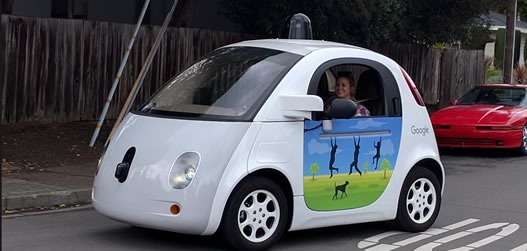平衡小车源码 平衡小车之家
Next year marks the 50th anniversary of one of the world’s most famous ‘thought experiments’. It may lack the pop-cultural punch of ‘Schrödinger’s famous cat‘, but it still stands out as an absolute zinger – it’s called ‘The Trolley Problem‘.
明年是世界上最著名的“思想实验”之一的50周年。 它可能缺少“ 薛定ding的著名猫 ”的流行文化冲击,但它仍然是绝对的歌手-它被称为“ 手推车问题 ”。

Phillipa Foote first sketched out the idea in 1967 and it was a philosophical question designed to probe at the soft underbelly of your ethics. Many subtle variations have sprung up since, but the core scenario goes like this:
菲利普·富特(Phillipa Foote)于1967年首先提出了这个想法,这是一个旨在探究您的道德软肋的哲学问题。 此后,出现了许多细微的变化,但是核心场景是这样的:
- Imagine a runaway trolley car (or train) is careering down a track towards a group of five workers. You have no way to warn them and they will most certainly all die without some kind of intervention. 想象一下,一辆失控的无轨电车(或火车)正朝着五个工人的方向前进。 您没有办法警告他们,并且如果没有某种干预,他们肯定会全部死亡。
- You have control of a switch lever that can divert the trolley into a side-track, instantly saving our five workers. However, there’s another person standing on that side-track who will now have no opportunity to escape a ‘hurtling trolley death’. 您可以控制切换杆,该切换杆可以将手推车转移到侧轨,立即节省了我们的五名工人。 但是,有另一个人站在那条旁道上,现在将没有机会逃脱“令人费解的电车死亡”。

你会怎么做? ( What Would You Do?)
Do nothing, witness five deaths, but bear no direct responsibility for the loss of life.
无所作为,目睹五人死亡,但对生命损失不承担直接责任。
- Or take action, save five lives, but personally bring about the death of another human. 或采取行动,挽救五个生命,但亲自导致另一个人的死亡。
It’s a tough problem and there’s no easy or unequivocally right answer. My daughter wanted to shout at them all to move but that’s not an option.
这是一个棘手的问题,没有简单或明确正确的答案。 我的女儿想大声喊叫他们动弹,但这不是一个选择。
For what it’s worth, most people choose to sacrifice the single person. The greater good.
为了它的价值, 大多数人选择牺牲一个人。 更大的好处。
However, the most common variation introduces a new person and is rather uncharitably called ‘The Fat Man’ scenario. In this story, you can choose to save the workers by – as nasty as it might sound – pushing a rather generously proportioned man in front of the oncoming trolley.
但是,最常见的变体引入了一个新人,因此被称为“胖子”场景。 在这个故事中,您可以选择挽救工人-听起来很讨厌-将一个相当慷慨的男人推到迎面而来的手推车前。
Unsurprisingly, most people are appalled by this idea. Regardless of the upside, surely killing an innocent man by pushing him in front of a train is the act of a monster?!
毫不奇怪,大多数人对此想法感到震惊。 不管有什么好处,一定要把一个无辜的人推到火车前杀死他,这是怪物的举动吗?
Of course, in a strictly mathematical sense, the only difference between the two stories above, is the method by which you choose to dispatch the unfortunate person. Levers are certainly much cleaner than a well-timed elbow. Does the method matter or is it all about the outcome?
当然,从严格的数学意义上讲,上述两个故事之间的唯一区别是您选择派遣不幸人员的方法。 拉杆肯定比适时的肘部清洁得多。 方法是重要的还是全部有关结果?
If you’re having trouble getting your head around the idea, Harry Shearer – he of Simpson’s and Spinal Tap fame – made a great video for BBC Radio 4 in 2014 that explains the problem brilliantly.
如果您难以理解这个想法,那么辛普森(Simpson)和《脊髓轻击》(Spinal Tap)的创始人哈里·希勒(Harry Shearer)在2014年为BBC Radio 4制作了一段精彩的视频,很好地解释了这个问题。
幸运的是,思想实验是无害的,对吗? ( Lucky That Thought Experiments are Harmless, Right?)
Of course, this is all just theory. Brain games. A mischievous pub conversation or, at worst, a chance for philosophy nerds to show off at dinner parties.
当然,这仅仅是理论上的。 脑游戏。 恶作剧的酒吧谈话,或者更糟的是,哲学家很可能在晚宴上炫耀。
Not quite.
不完全的。

Google self-driving car.
Google自动驾驶汽车。
As we’re all aware, most of the world’s major car companies are investing in driverless technology. We know these systems are already safer that the average human driver. Unlike us, robot cars are built to scan surrounding traffic thousands of times every second and instantly adjust to changes.
众所周知,世界上大多数大型汽车公司都在投资无人驾驶技术。 我们知道这些系统已经比普通驾驶员更安全。 与我们不同,机器人汽车每秒可扫描数千次周围交通,并即时适应变化。
But they can’t predict everything. Tires fail catastrophically. Trees fall unpredictably. Drivers suffer seizures. Very occasionally driverless cars are going to be in their own ‘Trolley Car’ scenarios. And – presumably – software developers are currently writing the decision algorithms to handle them. Set a ‘0’ and we go straight – set a ‘1’ and we turn.
但是他们无法预测一切 。 轮胎发生灾难性故障。 树木意外地倒下。 驾驶员会癫痫发作。 无人驾驶汽车偶尔会处于自己的“无轨电车”场景中。 而且( 大概 )软件开发人员目前正在编写决策算法来处理它们。 设置为“ 0”,我们直走–设置为“ 1”,我们转弯 。
It raises some heavy moral questions.
它提出了一些沉重的道德问题。
- If you paid for a car, would you expect it to prioritize your safety over others? 如果您购买了汽车,您是否希望它比其他人优先考虑您的安全?
- Is it a pure numbers game of ‘save the most humans’? 它是“拯救人类最多”的纯粹数字游戏吗?
- Should the age of the people make a difference? Perhaps babies get preference? 人民的年龄应该有所作为吗? 也许婴儿会喜欢?
- Should the car be taking into account the estimated body weights of potential accident victims? 该车是否应考虑潜在事故受害者的估计体重?
- Should prestige cars make different decisions to economy cars? 高档汽车是否应与经济型汽车做出不同的决定?
- Would Donald Trump’s car accelerate? (jk) 唐纳德·特朗普的汽车会加速吗? (jk)
Are software engineers even equipped to take on these kinds of tricky ethical questions? It’s certainly not part of most computer science courses. Perhaps Google, Volvo, and Ford need to be hiring more philosophers and ethicists.
软件工程师是否有能力解决这些棘手的道德问题? 当然,这不是大多数计算机科学课程的一部分。 也许Google,沃尔沃和福特需要雇用更多的哲学家和伦理学家。
With currently only a few hundred self-driving cars on the planet, these questions still falls close to the realm of the ‘thought experiment’.
目前地球上只有几百辆自动驾驶汽车,这些问题仍然接近 “思想实验”的领域。
But 10 years from now there could be millions of self-driving cars making life or death decisions every day. Things are about to get ‘real’– fast.
但是从现在开始的10年后,每天都会有数百万辆无人驾驶汽车做出生死攸关的决定。 事情将很快变得“真实”。
May you live in interesting times.
愿您生活在有趣的时代。
翻译自: https://www.sitepoint.com/the-trolley-problem-will-our-robot-cars-grow-up-to-be-heroes/
平衡小车源码 平衡小车之家





















 3490
3490

 被折叠的 条评论
为什么被折叠?
被折叠的 条评论
为什么被折叠?








